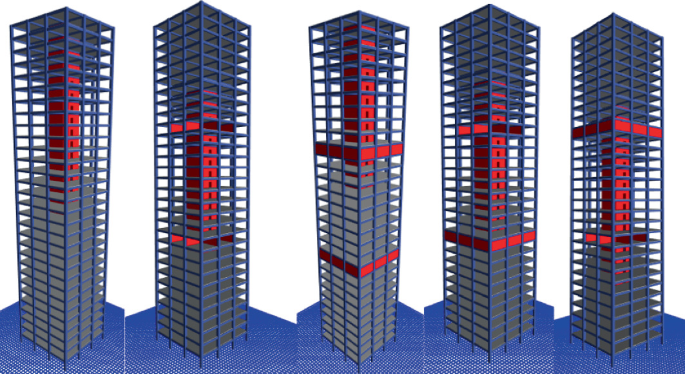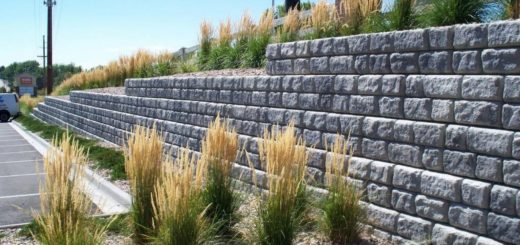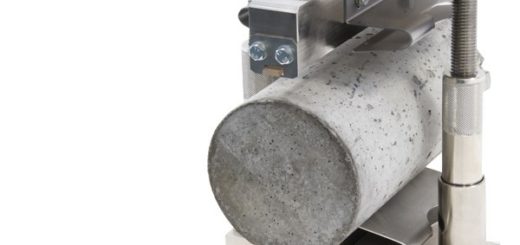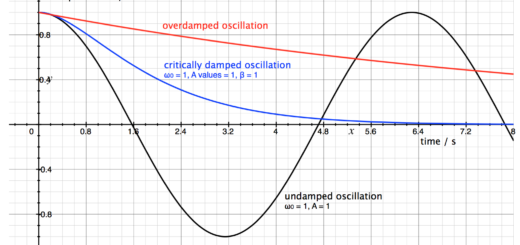Outrigger Systems in Tall Building Stability
Tall buildings are susceptible to lateral forces like wind and seismic activity, which can induce sway and affect the comfort and safety of occupants. To address these challenges, engineers have developed innovative structural systems, and one such system is the outrigger system. In this article, we will explore outrigger systems, their principles, applications, and their pivotal role in ensuring the stability of skyscrapers.
Understanding Outrigger Systems
An outrigger system is a structural configuration employed in tall buildings to enhance lateral stability.
It involves the use of horizontal trusses or beams, known as outriggers, that connect the building’s core (typically containing elevators, stairs, and services) to the exterior columns or walls.
The outriggers act as “outrigger arms,” extending from the core to the perimeter of the building.
The primary objectives of outrigger systems are:
- Lateral Load Distribution: To distribute and balance lateral forces evenly throughout the structure, preventing excessive sway.
- Stiffness Enhancement: To increase the overall stiffness of the building, which reduces the amplitude of lateral deflections.
- Structural Efficiency: To optimize material use and reduce the size of structural elements, enabling the creation of taller and more slender buildings.
Principles of Outrigger Systems
Outrigger systems function based on several fundamental principles:
- Diagonal Bracing: Outriggers are often equipped with diagonal braces or trusses. These braces transmit lateral forces from the core to the exterior columns, resisting lateral movement.
- Transfer of Shear Forces: Outriggers facilitate the transfer of shear forces from the core to the building’s exterior, reducing the bending moments in the columns.
- Vertical Load Transfer: Outriggers can also help transfer some of the vertical loads from the building’s upper floors to the core, improving the load distribution.
Image source: Internet
Types of Outrigger Systems
There are several variations of outrigger systems, each designed to suit specific architectural and engineering requirements:
1. Belt Truss Outrigger:
A Belt Truss Outrigger is a structural system used in the construction of high-rise buildings to enhance their stability, counteract lateral forces (such as wind and seismic loads), and ensure structural integrity.
This system involves the installation of a horizontal truss, typically made of steel or reinforced concrete, encircling the building’s perimeter. Here are the key aspects of Belt Truss Outriggers:
Purpose:
Enhancing Lateral Stability: High-rise buildings are susceptible to lateral forces that can induce swaying and discomfort for occupants. Belt truss outriggers are designed to increase a building’s resistance to such forces, ensuring that it remains stable and minimizes movement.
Distributing Loads: These outriggers effectively distribute the lateral forces generated by wind and seismic events across the building’s exterior columns. This even distribution prevents concentrated stresses and possible structural damage.
Engineering Features:
Horizontal Truss: The primary component of a belt truss outrigger is the horizontal truss. This truss encircles the building and connects the exterior columns. It acts as a structural ring, providing the necessary stiffness and strength.
Load Transfer: The belt truss transfers the lateral forces imposed on the building to the central core or core wall, which is typically a more robust and stable part of the structure. This load transfer mechanism prevents excessive sway.
Structural Stiffness: The horizontal truss significantly enhances the building’s overall structural stiffness, reducing lateral deflection and sway. This stiffness is vital for occupant comfort and safety in high-rise structures.
Applications in High-Rise Buildings:
Tall Skyscrapers: Belt truss outriggers are commonly used in the construction of tall skyscrapers and super-tall buildings to counteract the challenges posed by wind loads at significant heights.
Seismic-Prone Areas: In regions with high seismic activity, these outrigger systems are instrumental in enhancing a building’s ability to withstand earthquake-induced lateral forces.
Architectural Integration: Belt truss outriggers can be integrated into the architectural design of high-rise buildings. When incorporated skillfully, they can be exposed and become a distinctive part of the building’s aesthetics.
Wind Resilience: Belt truss outriggers help high-rise buildings resist strong winds by providing additional lateral stability, reducing wind-induced swaying.
Occupant Comfort: By reducing building sway, belt truss outriggers ensure occupant comfort and safety, especially on higher floors.
Belt Truss Outriggers are critical in the construction of high-rise buildings, addressing the need for stability and lateral force resistance.
Their engineering design and load distribution capabilities make them a valuable component for tall and architecturally impressive structures, ensuring structural integrity, safety, and occupant well-being.
2. Hat Truss Outrigger:
A Hat Truss Outrigger is a structural system commonly employed in the construction of high-rise buildings to enhance their stability and resistance to lateral forces, particularly wind and seismic loads.
This system is characterized by the use of a horizontal truss or “hat truss” located at the upper levels of the building, often near the roof or crown. Here are key details about Hat Truss Outriggers:
Components and Design:
Hat Truss: The primary feature of a Hat Truss Outrigger is the horizontal truss, which takes on the shape of a “hat.” This truss spans the building’s perimeter and is usually situated at the upper levels, creating a horizontal ring around the structure.
Connections: The hat truss is connected to both the central core or core wall of the building and the exterior columns. These connections ensure that lateral forces are effectively distributed and transferred from the building’s outer shell to its core, increasing overall stability.
Purpose and Functions:
Lateral Stability: Hat Truss Outriggers play a vital role in enhancing a high-rise building’s lateral stability. They are designed to counteract the swaying and motion induced by strong winds and seismic activity, ensuring the comfort and safety of occupants.
Load Transfer: The primary function of the hat truss is to transfer lateral forces, such as wind loads, to the building’s central core or core wall. This load transfer mechanism prevents excessive deflection and ensures the building remains upright.
Structural Stiffness: By adding a horizontal truss at the upper levels, the system significantly increases the building’s overall structural stiffness. This stiffness reduces lateral sway and deflection, particularly in tall structures.
Applications:
High-Rise Buildings: Hat Truss Outriggers are commonly employed in the construction of high-rise and super-tall buildings. They are especially valuable in locations where strong winds or seismic activity present challenges for structural stability.
Architectural Integration: In many cases, Hat Truss Outriggers are integrated into the architectural design of high-rise buildings. They can be exposed and become a distinctive part of the building’s aesthetics.
Seismic-Prone Regions: Buildings in regions prone to earthquakes benefit from the added stability provided by hat truss outrigger systems, which help resist lateral forces during seismic events.
In summary, the Hat Truss Outrigger system is a crucial component in the construction of high-rise buildings, ensuring that they remain stable and resilient in the face of environmental forces. This system enhances structural stiffness, distributes loads, and contributes to occupant comfort and safety in tall structures.
3. Belt and Hat Truss Combined:
The combination of a Belt Truss and Hat Truss in the design of a high-rise building is a powerful approach to enhancing structural stability, mitigating lateral forces, and ensuring the structural integrity of the building, especially in challenging environmental conditions.
This combined system leverages the strengths of both truss types to achieve superior performance. Here’s an overview of the integration of Belt and Hat Truss systems:
As previously discussed, the Belt Truss is a horizontal truss that encircles the building’s perimeter, connecting the exterior columns. Its primary role is to distribute lateral forces and moments, such as those from wind and seismic loads, across the building’s structure.
The Hat Truss, on the other hand, is a horizontal truss situated at the upper levels of the building, typically near the roof or crown. It connects the central core or core wall with the exterior columns, serving to enhance lateral stability and structural stiffness.
Combined Benefits:
The integration of both truss systems in a high-rise building design offers several advantages:
Enhanced Lateral Stability: The combination of a Belt Truss and Hat Truss provides a comprehensive solution to resist lateral forces. The Hat Truss at the upper levels reduces sway, while the Belt Truss near the base distributes these forces effectively.
Load Distribution: Lateral forces are evenly distributed among the exterior columns, preventing localized stress concentrations. This even distribution enhances the building’s overall load-bearing capacity.
Architectural Integration: When designed with care, the combination of Belt and Hat Truss systems can be integrated into the architectural design of the building, contributing to its aesthetics and creating distinctive design elements.
Wind and Seismic Resilience: This dual approach ensures that the building can effectively withstand wind and seismic forces, making it suitable for high-rise structures located in regions prone to these challenges.
Applications:
The combination of Belt and Hat Truss systems is particularly well-suited for the construction of super-tall and high-rise buildings. It is a common choice in skyscrapers located in urban areas where wind loads and seismic activity are significant considerations.
Complexity and Cost:
It’s important to note that the integration of both systems can increase the complexity of the building’s structural design and construction. This can lead to higher costs, but the added benefits in terms of stability, safety, and occupant comfort are often considered worth the investment.
Combination of Belt and Hat Truss systems in the design of high-rise buildings provides a robust solution to the challenges posed by lateral forces. This approach ensures the building’s structural stability, even in adverse environmental conditions, and contributes to the overall performance and safety of tall structures.
Outrigger systems are a vital tool in the construction of tall buildings, ensuring their stability and resilience against lateral forces like wind and seismic activity.
By distributing loads efficiently and enhancing stiffness, these systems enable the creation of iconic skyscrapers that define our urban landscapes.
As technology and engineering practices continue to advance, outrigger systems will remain integral to the construction of ever-taller and more innovative buildings that shape the cities of the future.




